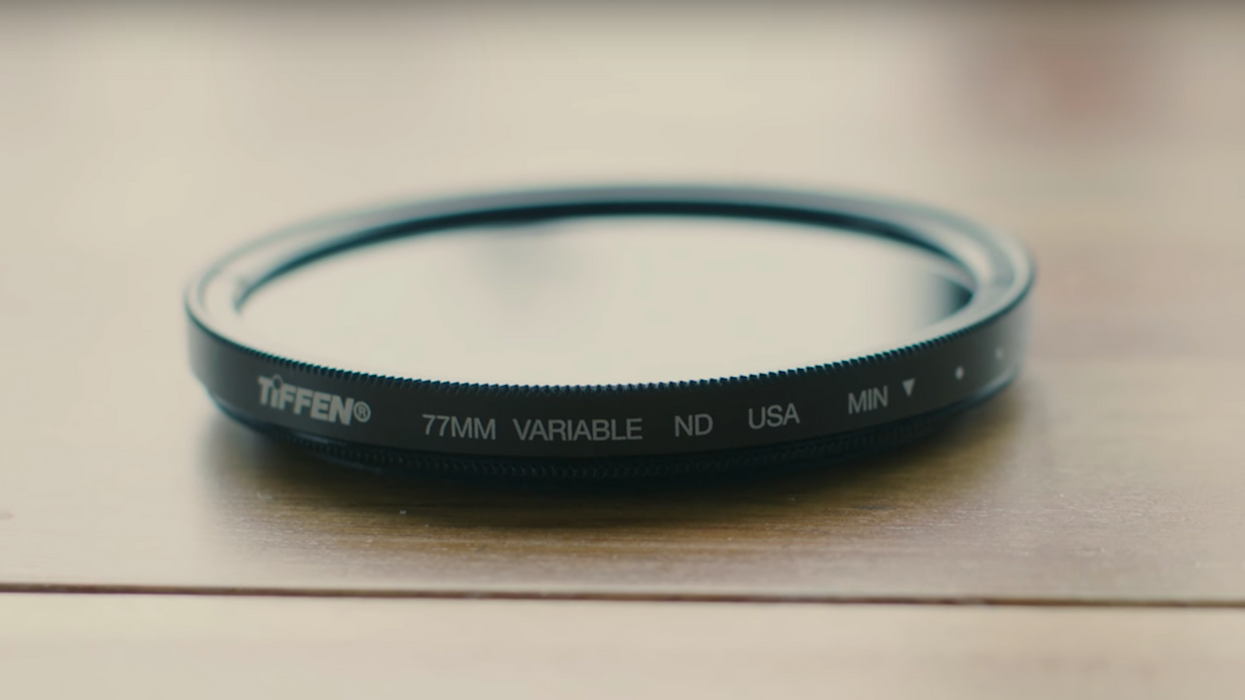A Few Things You Should Know About Shooting with ND Filters
There's a reason why these tools are considered a must-have in every filmmaker's gear bag.

Neutral Density filters, or ND filters, are an essential piece of gear for filmmakers shooting outdoors. These things act as "sunglasses for your lens," blocking out the light that would otherwise enter your lens, all without (ideally) affecting the color of your image (that's where the "neutral" bit comes from), which allows you to shoot in a variety of situations that, without them, would leave your images overexposed.
If you're a beginner who has never heard of ND filters before, don't sweat it; none of us were born with that kind of knowledge, so we had to learn it somewhere. Luckily, David Bergman of Adorama TV gives a rundown on the basics of ND filters in this super short video. Check it out below:
Why use an ND filter?
Even though Bergman gives some good examples of when to bust out ND filters, they apply more to photographers who have more flexibility when deciding on their shutter speeds than filmmakers. This gives them more wiggle room to reduce exposure by shooting with faster shutter speeds, because, unless they're a sports photographer or photographing other fast-moving subjects, motion blur remains a stylistic choice rather than a technical one. That's an important thing to understand about filmmaking: in order to capture that natural motion blur that has become a key feature of the "film look" you have to shoot at lower shutter speeds—ideally double the inverse of your frame rate. (24 fps, 1/48 shutter speed). So, if your image is still overexposed after adhering to that standard (which doesn't necessarily have to be adhered to), you can use ND filters to achieve proper exposure.
Another way ND filters can help you during a shoot is if you want to shoot with a wide open aperture to capture a shallow depth-of-field and produce beautiful bokeh. Opening up your lens lets more light in, so ND filters will help block out the light so you can maintain proper exposure.
Which ND filter should you shoot with?
ND filters come in lots of different flavors and it's important to know at least a little bit about each one so you know which will best suit your project/needs. Below, you'll see a list of different ND filter types, as well as mounting options.
- Fixed ND filter: These filters reduce your exposure by specific amounts: 1, 2, and 3 stops.
- Ultra ND filter: These bad boys reduce your exposure by 6 and 10 stops.
- Variable ND filter: These filters allow you to conveniently change the amount of light that comes into your lens by turning the front element.
- Graduated ND filter: Half neutral density, half clear, these filters are used to balance your exposure. For example, if you're trying shoot outdoors, these filters will allow you to darken your sky without darkening your entire image. They're ideal for shooting landscapes.
- Screw-in filters: These circular filters screw right onto your lens. They're great if you want to stack them to add more neutral density, but not so great if you're working with a variety of lenses with different thread sizes.
- Square filters: These square filters are mounted onto the front of your lens using a filter holder system. They are bulkier and more expensive but work with a wider range of lenses and are easier to use with graduated NDs.
What are some other ND filter basics that beginners should know about? What are your favorite brands? Let us know in the comments below.
Source: Adorama












